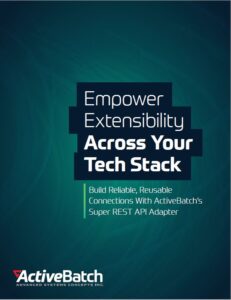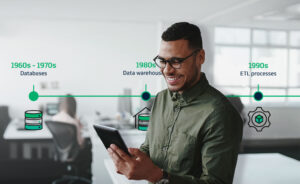Toward Autonomous IT Operations: An Overview

What Is Autonomous IT Operations?
Autonomous IT operations refers to IT systems that are self-governing. This means minimizing manual interactions within an IT environment so that day-to-day operations can be run without human intervention.
Autonomous IT systems rely on machine learning and predictive analytics to correct future issues, or to respond to issues in real-time. This includes the use of historical data to identify patterns and auto-remediation workflows for immediate responses.
Autonomous IT is similar to the concept of autonomic computing and overlaps in many ways with AIOps. Whereas AIOps solutions seek to create a self-healing system, autonomous IT places an additional focus on managing IT operations, for instance deploying compute resources, providing failover capabilities and distributing workloads.
By reducing the need for manual tasks in day-to-day operations, autonomous IT can drastically reduce human error while giving IT professionals more time to spend in development.
Autonomous IT operations is a goal or strategy that requires the orchestration of multiple tools to support data collection and analysis, automation, monitoring and day-to-day operations.
Autonomous IT Is The Next Step In IT Transformation
IT teams are under pressure. They’re being asked to complete more projects while managing increasingly complex environments. Organizations are relying more on cloud infrastructure and SaaS tools, often split between separate cloud providers, while businesses push for more digital services and solutions.
A few studies highlight the pinch IT teams find themselves in:
- 75% of expect IT headcounts to continue to lag behind the increase in applications (IDC)
- 63% of CIOs believe cloud environments are now too complex for people to manage (Dynatrace)
- 76% of IT teams saw growth in the volume of projects in 2020, with 83% expecting additional increases in 2021 (Gartner)
- 56% of CIOs say they can’t complete the projects they commit to because too much time and resources are spent keeping the lights on (Dynatrace)
- 51% of businesses are frustrated by the time it takes IT to deliver digital projects (ZDNet)
- IT teams spend 59% of the time maintaining the status quo (Mulesoft)
As a result, organizations are investing more in IT automation in order to reduce the volume of manual tasks IT teams are responsible for. By leveraging data created by IT environments, machine learning and artificial intelligence can be applied to further automate IT operations.
Digital transformation has accelerated as a result of the COVID-19 pandemic. Organizations have been forced to move chunks of their operations into the cloud to accommodate remote work, while relying on new digital services to supplement traditional value streams. These changes have ushered in a new normal that will demand more data and real-time, always-on digital services.
Key Features And Capabilities For Autonomous IT Operations
IT teams are continuing to shift workloads from on-premises to cloud-based data centers. At the same time, more services are being provided virtually, with sales and operations increasingly reliant on the cloud.
As a result, cloud environments are becoming more complex with a majority of organizations using at least two cloud providers. In order to meet business needs, these environments need to be both scalable and dynamic, which poses a critical challenge for IT teams: how to manage hundreds of cloud-based servers to meet real-time demand? Leaving resources to idle is costly while slow response times can damage the customer experience.
With the right tools, IT teams can automate the provisioning and deprovisioning of cloud-based resources. Machine learning can be applied to predict spikes in demand while dynamic provisioning allows for resources to be spun up and spun down based on real-time demand.
Autonomous systems also require self-healing IT operations. This involves the use of AI algorithms to predict issues. In some instances, enterprise automation solutions can be used to collect environment data that makes it possible to detect future issues and also options for optimization. Users in this case receive notifications of actions that can be taken to prevent a future issue or to optimize a use case with one click.
End-to-end visibility is key to self-healing. Processes and systems need to be monitored and managed from a single location such as an enterprise workload automation solution or orchestration tool that can tie-in monitoring and reporting tools. High-availability failover is also critical to the autonomous environment, ensuring that workloads continue with minimal delay in the case of a server or scheduler crashing.
Future Of Autonomous IT
IT environments will continue to grow and become more complex as new technologies advance. This includes new tools —and an explosion of data— that will be possible with 5G, including new use cases for IoT-connected devices.
Moving forward, it will be increasingly difficult to manage IT infrastructure and operations without the use of automation. Decision-making will rely on fluid pipelines that can deliver data and reports in near real-time, while hundreds or thousands of endpoints will need to be managed, including cybersecurity, far surpassing the manual capabilities of IT teams. According to a Business Insider survey report, IoT connected devices will triple over the next five years, reaching 40 billion.
In order to meet these new challenges, IT teams will need to automate as many manual tasks as possible. This includes automating remediation workflows, predicting issues and optimizing environments without the need for human intervention. By doing so, IT teams will be able to improve reliability and resiliency while finding themselves with much more time and resources for high-value projects that require innovation and development, instead of maintaining the status quo.
Stay ahead of business needs with reliable, reusable integrations
See how API adapters enable developers of any skill level to build connections for end-to-end processes and IT services.








